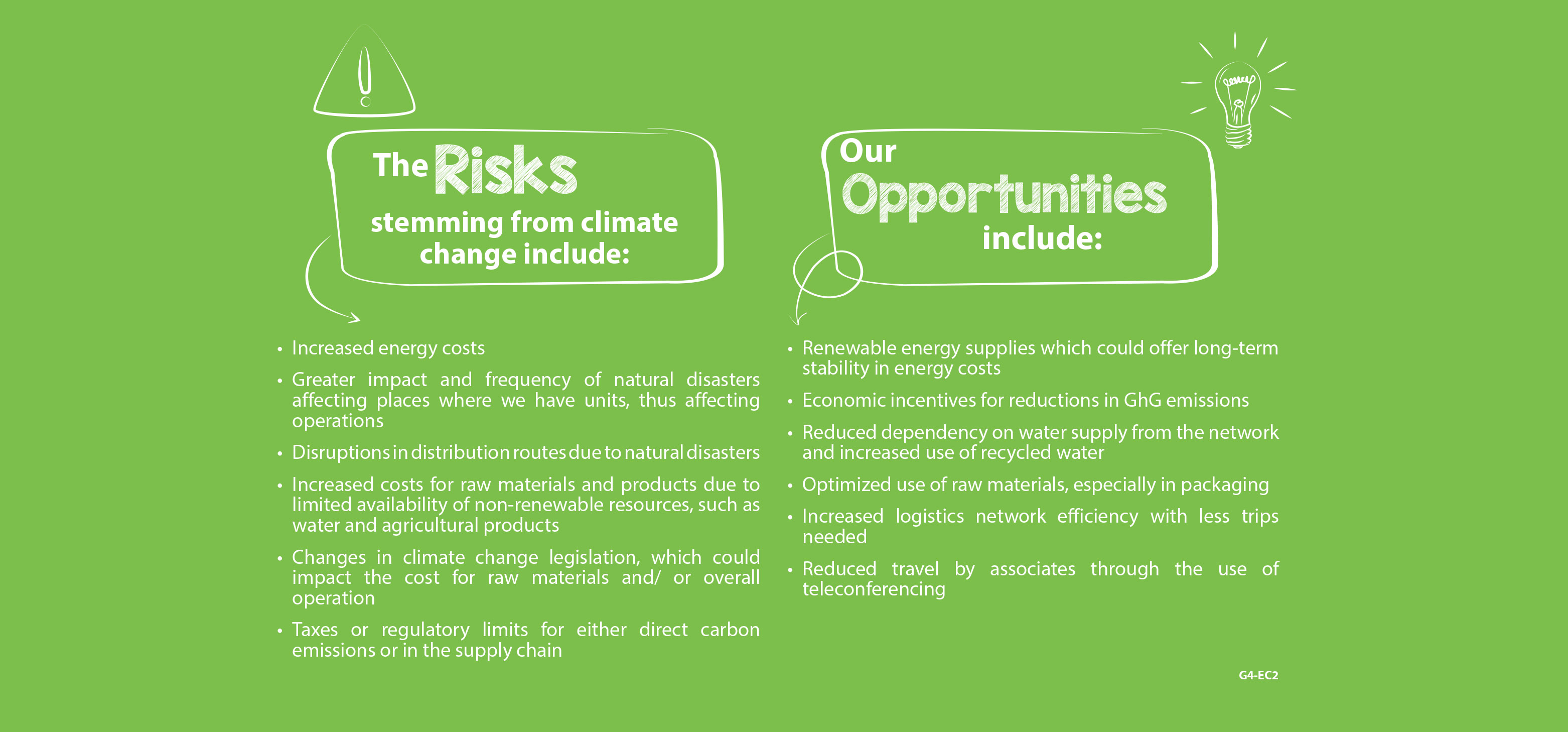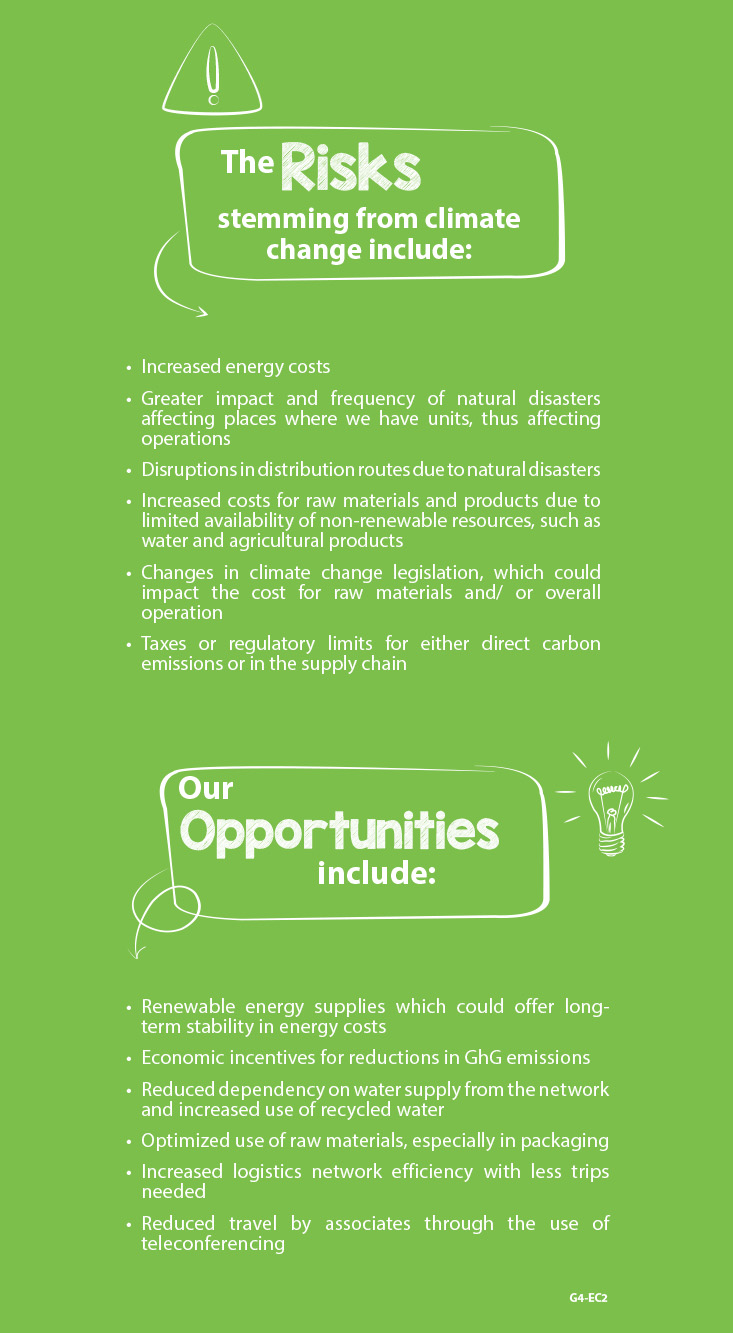EMISSIONS
The emissions profile constitutes Scope 1 emissions, including the burning of fossil fuel such as diesel, LP gas and natural gas; mobile combustion for automobiles pertaining to the Company; and the escape of refrigerating gas emissions.


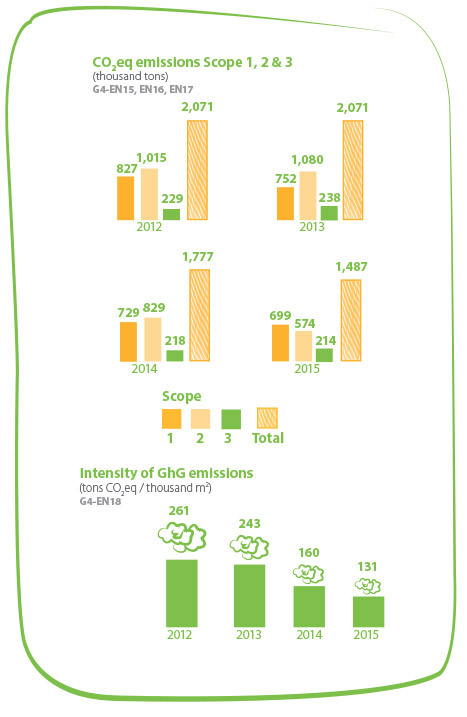
We also have Scope 2 emissions, such as the purchase of electricity; and Scope 3, which refers to mobile combustion from the subcontracted fleet used to distribute merchandise to the stores and back; air travel by associates for work-related reasons; and emissions generated by our suppliers due to the volume of business they have with us. The graph is for Scope 1, 2 & 3 emissions, both absolute and relative to square meters of construction. G4-EN19
In order to estimate greenhouse gas (GhG) emissions, the GhG Emission Protocol established in the World Resources Institute (WRI) and the World Business Council for Sustainable Development (WBCSD) is used. The data is obtained from aquired amounts of fuels, coolants, and electricity. Emissions are calculated by using published emission factors. Data on consumption corresponds to comparable units during comparable months.
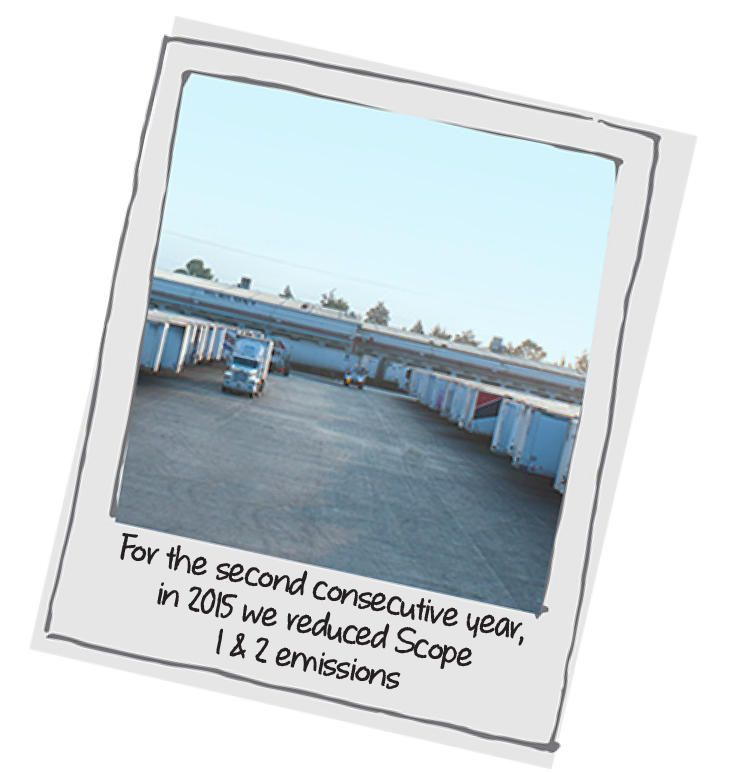

For the second consecutive year, in 2015 we reduced Scope 1 & 2 emissions through the use of renewable energy, energy efficiency projects, and the Coolant Leak Control Program. In Mexico, emissions not generated by wind-farm energy amounted to 230,058 tons of CO2eq. G4-EN19
We are the only Self-service Company in Mexico and in Central America that participates in the Supply Chain Program, which is part of the Carbon Disclosure Project, through which we provide our suppliers with a report on their carbon emissions and the analysis of risks and opportunities by sector. This is the first year we participated and we extended an invitation to 250 suppliers, of which 108 answered the questionnaire; 28 initially confirmed their intention to participate but in the end did not respond; 106 ignored the invitation; and eight companies declined.
In total, there were 1.2 million tons of Scope 3 emissions of CO2eq. This is added to emissions from merchandise transport -176,208 tons of CO2eq— and 6,628 tons of CO2eq from air travel by associates.
G4-EN17
This year, we presented an unusual 6.4% increase in R-22 leakage equivalent to 15 tons. G4-EN20
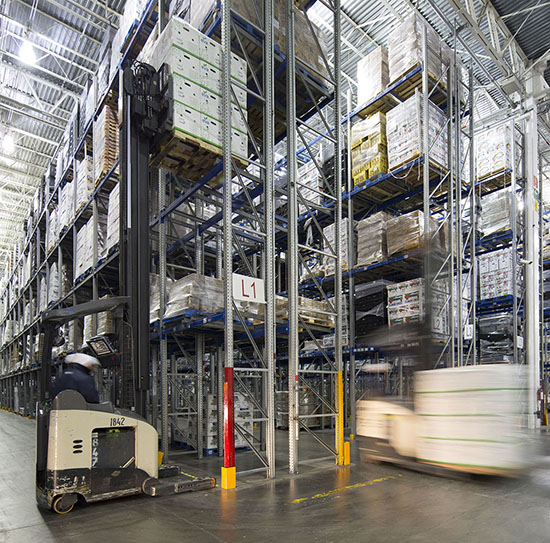
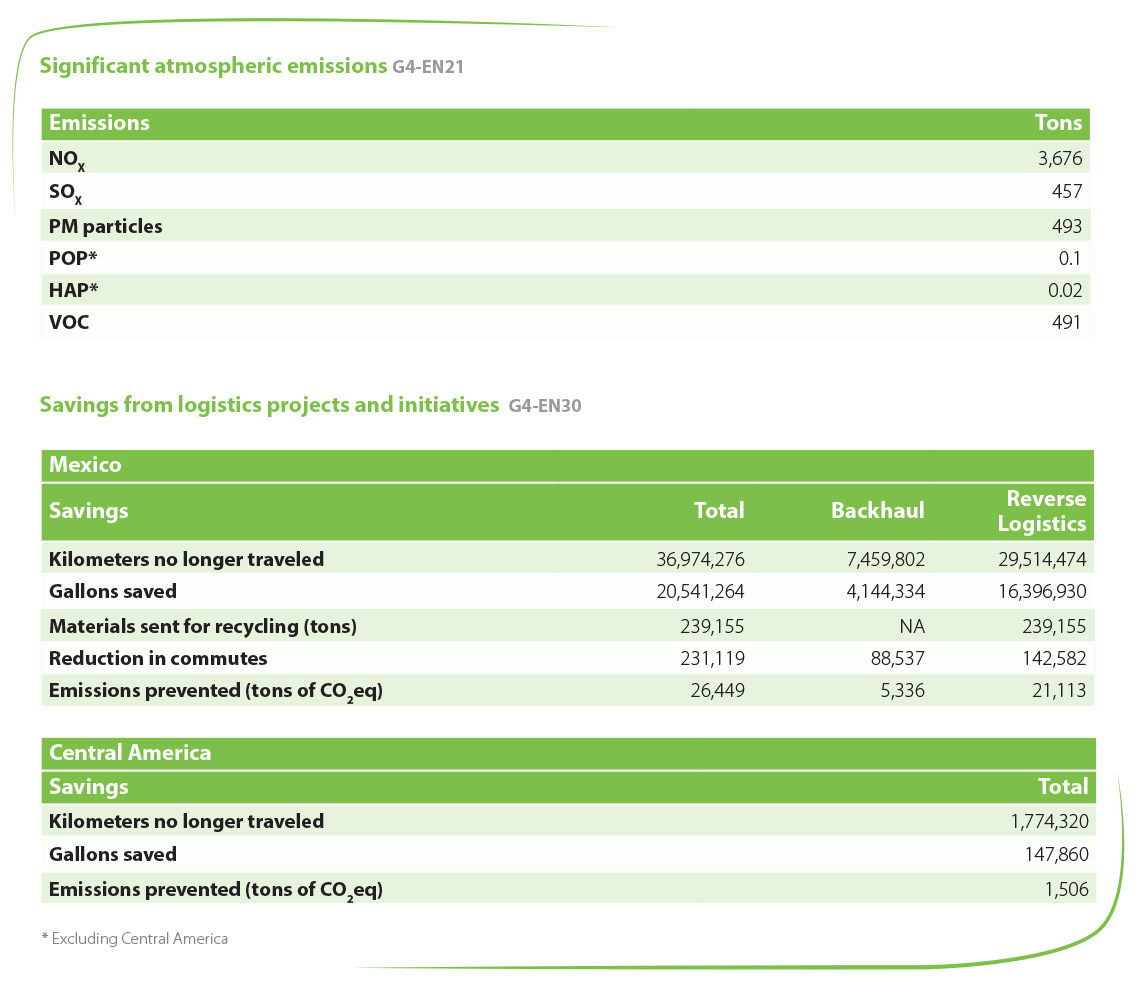
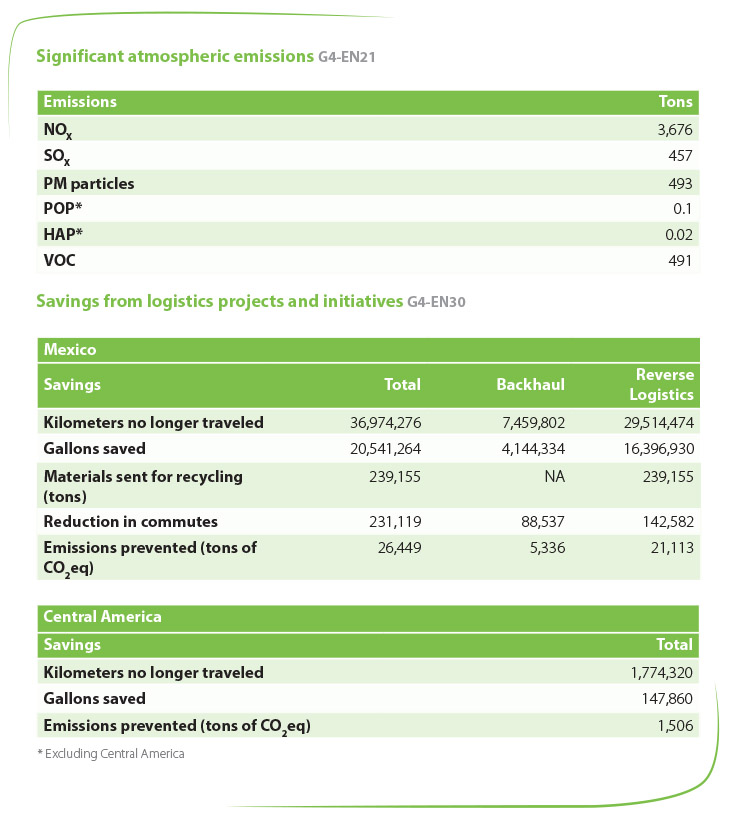
Nonetheless, Mexico’s emissions of nitrogen and sulphur dioxides and the particles and volatile organic compounds generated through mobile combustion have recorded a decrease of 16% over figures for the previous year, as shown in the table Significant atmospheric emissions. This is due to the decrease in consumption of LP gas, as it was replaced by natural gas.
Moreover, to reduce emissions we have employed an energy efficiency initiative for freight known as Backhauling, which is done in collaboration with our suppliers. It consists of combining our store supply routes so that the return trips to the distribution center include stopping to pick up products from supplier warehouses, and cardboard and shrink wrap from our stores, thereby reducing the need for additional commutes and improving costs and efficiency.
Our climate change strategy entails the evaluation of risks and opportunities, energy efficiency initiatives and the mitigation of GhG through corporate objectives. Prior to approval, all initiatives undergo rigorous review processes to ensure alignment with overall Company strategies. Risks and opportunities are evaluated at Company, market, and asset levels in terms of the scope of the impact. Information is continuously gathered to identify risks or opportunities from the widest range of sources, including corporate offices, sales floor associates, industry contacts, consultancy firms, government and non-government organizations, news agencies, professional associations, legislators, investors, and members of the financial community.
